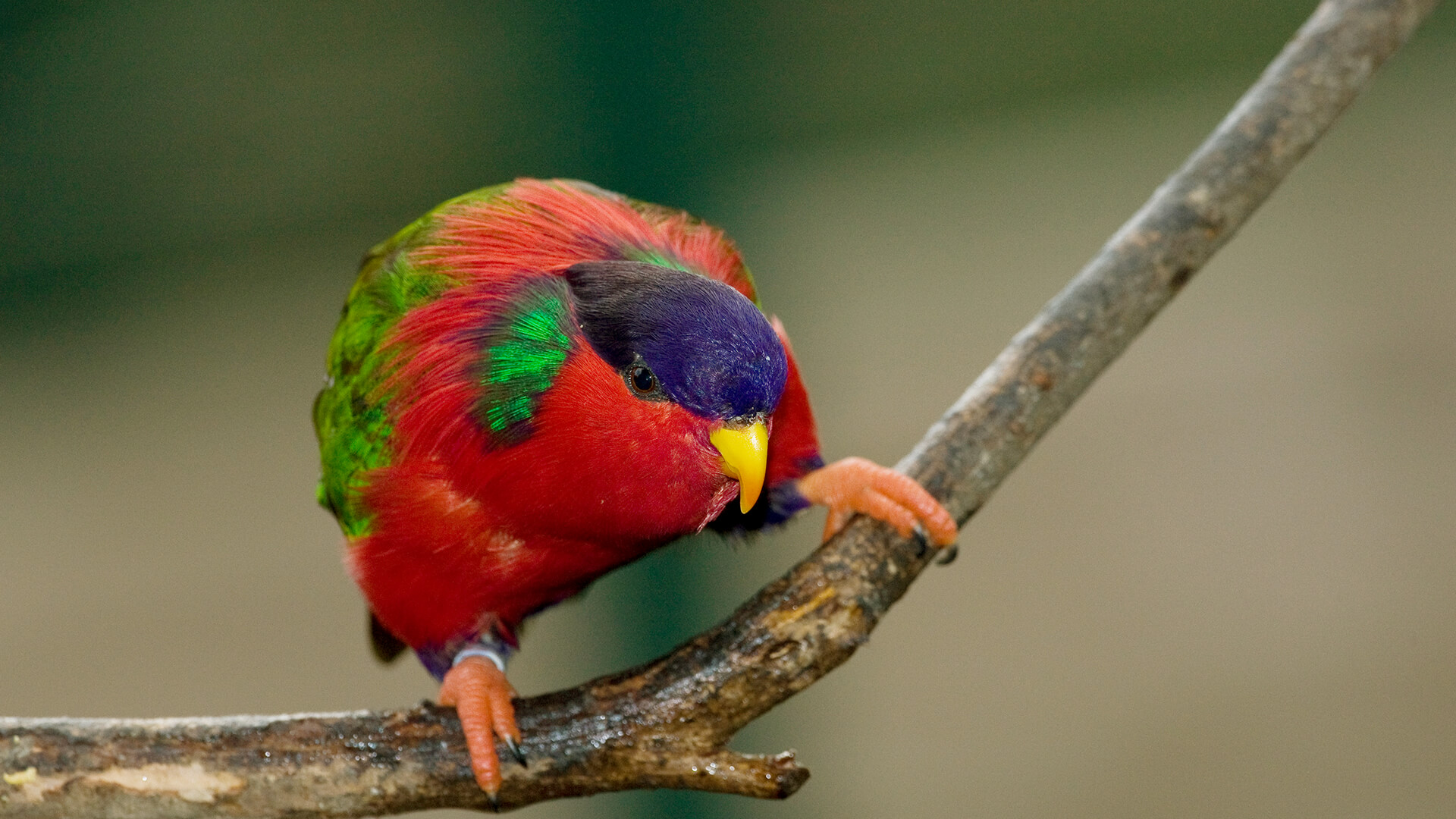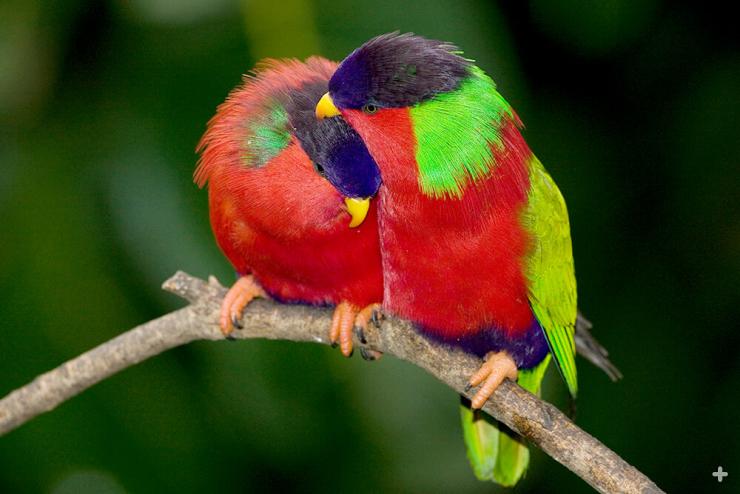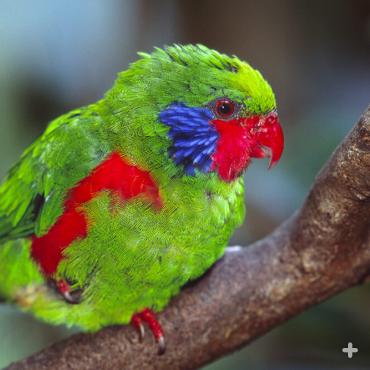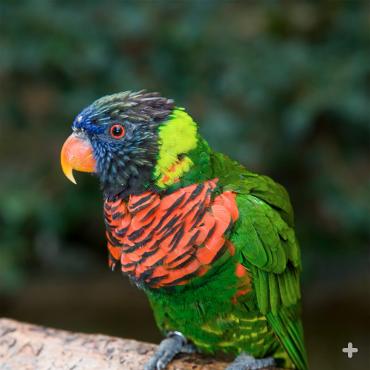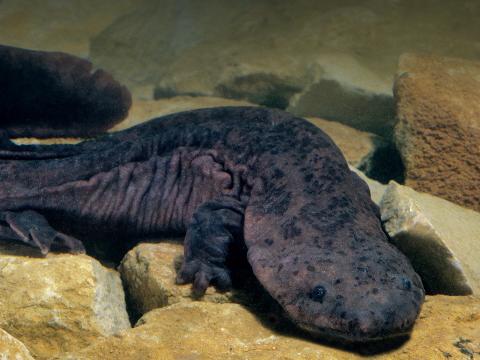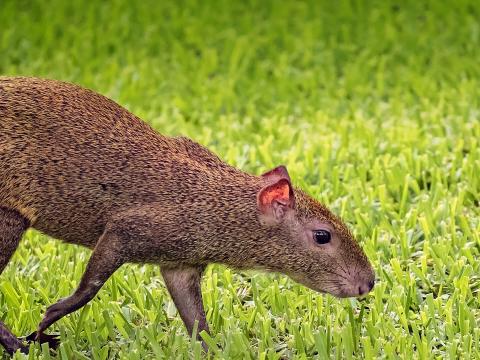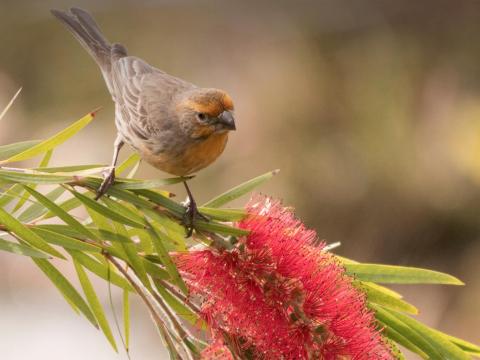Lory and Lorikeet
- CLASS: Aves (Birds)
- ORDER: Psittaciformes
- FAMILY: Psittacidae
- SUBFAMILY: Loriinae
- GENERA: 12
- SPECIES: 53
ABOUT
Rainbows overhead: Parrots are known for their bright colors, and some of the most colorful members of the parrot family are lories and lorikeets. Also known as honeyeaters, the many members of this parrot group (subfamily Loriinae) can be found throughout the islands of the South Pacific and Australia.
There are differences between lories and lorikeets, especially if you compare tails. In general, lories are bigger, with tails that are short, rounded, or square. Lorikeets tend to be smaller, with longer, pointed tails. Most lories are red with patches of yellow, purple, and green; most lorikeets are green with patches of red and yellow. There are, of course, exceptions, and these birds can be found in all the colors of the rainbow.
HABITAT AND DIET
Lories and lorikeets are strictly arboreal and can be found in forests, mangroves, and eucalyptus groves. The flocks sometimes have thousands of birds and seem to blanket the whole sky. Some species, such as the rainbow lorikeet, are nomadic and follow the flowering season of the eucalyptus trees up and down the coast of Australia.
Their small size and bright colors help lories and lorikeets hide in trees, usually staying safe from would-be predators, such as birds of prey and snakes. Living in large flocks helps keep the birds safe as well, as there are many eyes to look out for danger.
Lories and lorikeets have a body part that is unique among parrots: a brush-like tongue! Instead of eating mostly nuts and seeds like other parrots, lories and lorikeets dine on flowers, pollen, and nectar. Because of their diet, lories and lorikeets have a weak gizzard and crop compared to other parrots. Their beak is perfect for crushing flowers, and their special tongue mops up the nectar.
The tongue can also gather pollen particles and pack them into easy-to-eat bundles. These birds even use their strong beak and four-toed feet to perform acrobatics! They climb around on the branches and hang upside down to get to all the flowers on a tree.
FAMILY LIFE
As social birds, lories and lorikeets usually travel from tree to tree in large, squawking flocks in search of flowers and nectar, chattering excitedly as they feed. Once safely back to their home trees from their feeding grounds, the little birds are generally quiet, unless a predator is spotted and an alarm call is made.
Many lory and lorikeet species spend time grooming a partner during rest periods, cleaning those important and hard-to-reach feathers.
Like many parrots, lories and lorikeets usually stay with one partner and may breed at any time of year, though in southern Australia, the breeding season is between August and January. Nest sites are high above the ground in the hollows of trees, which the birds layer with a covering of decayed wood. The female and male often roost together, but only the female sits on her two small, white eggs. The male helps feed the chicks, which hatch with eyes closed and no feathers. The chicks slowly grow plumage and are able to fly after seven to eight weeks.
CONSERVATION
Though not all Loriinae species are endangered, all face threats from humans. Many people kill them for their bright feathers or capture them to sell as pets, even though this is illegal in many countries. Trees that provide food and shelter for the birds are disappearing due to logging.
Lories and lorikeets are considered beautiful and charming birds, but they have developed a taste for farmed crops such as grapes and coconuts. They can quickly destroy a farmer's orchard and are now regarded as pests in many places. Because of this, the birds are in danger of being poisoned or shot by farmers. However, there is hope. Some farmers have begun planting other flowering trees on the borders of their fields and orchards to provide a different source of food for these unique birds.
Hope for endangered lories comes from San Diego Zoo Wildlife Alliance and the French Polynesian Department of the Environment. Beginning in 1991, we collaborated to conserve three lory species endemic to French Polynesia: the Tahitian blue lory Vini peruviana, the ultramarine lory Vini ultramarina, and, most recently, the Kuhl's lory Vini kuhlii of Rimatara Island.
In 1992 through 1994, our biologists relocated ultramarine lories from a Polynesian island to one with less disturbed habitat to establish a second population. A follow-up survey in 1997 showed the ultramarine lory population had become quite robust. Today, unfortunately, the recent unintended introduction of black rats to the island, most likely from shipping containers, seems to have wiped out most of the birds—quite a blow to ultramarine lory conservation efforts.
In 2007, the Zoo helped translocate the Kuhl's lory from Rimatara to Atiu in the Cook Islands to establish a second population as insurance against extinction. Learning from our experience with ultramarine lories, our team spent time educating the people on Atiu about the devastating consequences of black rats to their island’s native wildlife before the translocation began.
These birds have now become firmly established on Atiu, with a small group of adventurous lories finding their way to a nearby island. At last count, the lory population on Atiu has steadily risen from the original translocated flock of 27 to an estimated 300 birds, with no black rats in sight! Keeping black rats off these islands is key to the conservation of lories on the Pacific islands.
By supporting San Diego Zoo Wildlife Alliance, you are our ally in saving and protecting wildlife worldwide.

